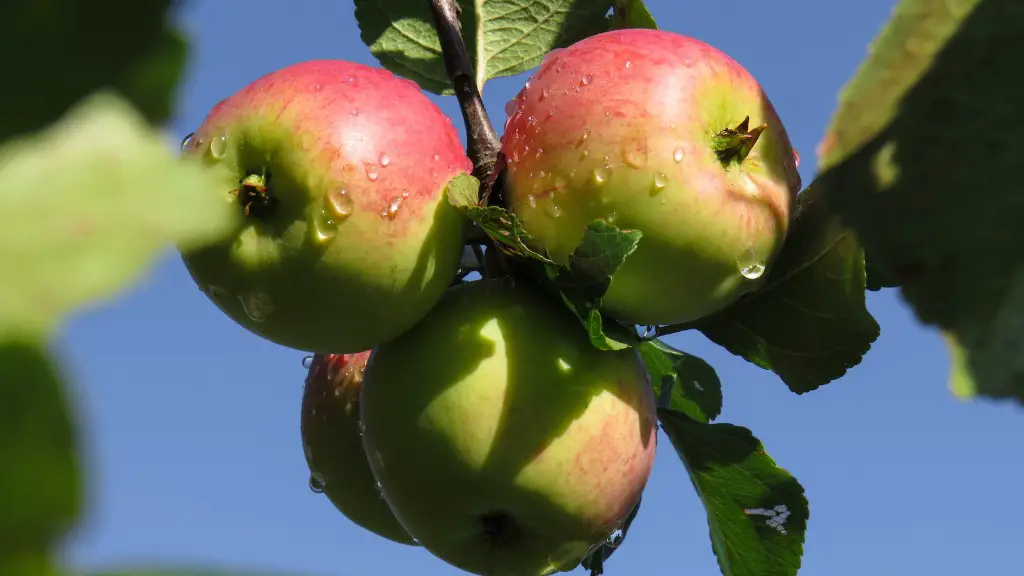Growing an indoor lemon tree from seed may seem like a daunting task. However, with the right knowledge, it can be done relatively quickly and easily. Here are the essential steps to get you started:
Contrary to popular belief, growing an indoor lemon tree from seed does not require extensive preparation. Preparing the soil is the first order of business. To do this, mix equal parts peat moss and vermiculite with some sand and some shredded manure. Make sure to mix the soil well so that it’s evenly distributed.
Once you’ve finished preparing the soil, it’s time to plant the seeds. Place a few seeds 2-3 inches down into the soil so that the germination process can begin.When you’re done planting, lightly press some of the soil over the seeds and mist them with water. Cover the pot with a plastic bag to create a moist environment.
After the seeds have been planted, place the pot in a warm spot where it will get at least 8 hours of direct sunlight each day. Water the soil regularly, but don’t overwater as it will cause the roots to rot. The seeds should begin to sprout within a few weeks.
When the seedlings have grown to a height of around 4 inches, it’s time to transplant them into a slightly larger pot. Make sure to use well-draining soil so that the lemon tree can grow strong and healthy.
Now that your lemon tree is firmly rooted, you may have to prune it occasionally. This is to prevent it from becoming overcrowded. Keep an eye on the tree for signs of disease or pests, as these can quickly kill the tree if not addressed.
Finally, you’ll need to fertilize your lemon tree once a month. Use a balanced fertilizer that includes nitrogen, phosphorus and potassium. This will help the tree to thrive and produce juicy lemons.
Watering the Indoor Lemon Tree
Watering an indoor lemon tree is an essential part of keeping it healthy and thriving. It is best to water the tree only when the soil is dry. The water should be lukewarm and it should be applied to the root area evenly. When watering, make sure not to use too much water as this can cause the tree to become waterlogged and die.
When applying fertilizer, which should be done once a month, make sure to mix it into the soil rather than spraying it onto the leaves. This will help ensure that the nutrients are absorbed properly. Avoid over-fertilizing, as this can cause burn marks on the leaves.
Finally, when it comes to watering the indoor lemon tree, it is important to remember that it does need some protection from direct sunlight. If it is exposed to too much heat, it can suffer from sunburn and die. Keep the tree in an area with indirect sunlight and make sure to water it regularly during the hot summer months.
Providing Light to the Indoor Lemon Tree
When it comes to providing light to an indoor lemon tree, it is best to position it near a south-facing window where it will get plenty of direct sunlight throughout the day. It is also beneficial to use grow lights to supplement the natural sunlight that the tree will receive. This will ensure that the tree has enough energy to keep growing.
On the other hand, it is important to remember to avoid placing the lemon tree in a place where it will get too much direct sunlight. As mentioned before, this can cause sunburn and ultimately kill the tree. Instead, make sure to position it in an area where it will get 6 to 8 hours of direct sunlight each day.
It is also important to keep in mind that the indoor lemon tree will need a period of darkness. This could mean placing it in an area where it will receive no direct sunlight, or turning off the grow lights for a period of time. This will help the tree get the rest it needs to stay healthy and vibrant.
Pruning the Indoor Lemon Tree
Prune away any diseased branches or any dead leaves as soon as you spot them. This will help to keep the tree healthy and happy. Pruning should also be done to maintain the size of the tree and to keep it looking neat and tidy.
If any of the branches are too heavy or out of place, they should be trimmed to ensure the tree doesn’t become unbalanced. This will also help to keep air flowing through the tree, which is important for its growth. Be sure to use sharp and clean pruning shears to avoid damaging the tree.
Also, when pruning the indoor lemon tree, it is important to not remove too many branches or too much foliage at once. Doing so can cause the tree to become stressed, which can result in poor growth and other health issues. The pruning process should be done slowly over time, and with patience.
Harvesting and Storing the Lemons
When the lemons on the indoor lemon tree are ripe, they should be harvested. Gently twist the fruits off the tree and then wash them off. Place the lemons in a cool dry place, away from the direct sunlight, and they should keep for up to two weeks.
If you want to store the lemons for longer, you can place them in the refrigerator or freezer. In the fridge, the lemons will keep for up to three weeks. If you choose to freeze them, they will keep for up to 6 months, as long as they are kept in an airtight container.
Regardless of how you choose to store them, it is important to remember that the lemons should be used as soon as possible for the best flavor. If you don’t plan on eating them right away, consider juicing them and freezing the juice to use later.
Dealing with Pests and Diseases on the Indoor Lemon Tree
Unfortunately, indoor lemon trees can sometimes be prone to pests and diseases. The most common pests that you might find on your lemon tree are aphids and spider mites. If you spot any of these, you should make sure to remove them immediately. It might also be beneficial to use an insecticidal soap to kill any pests that you can’t remove manually.
Diseases are also something to watch out for. Common diseases can include root rot, leaf spot, and powdery mildew. If you spot any of these, you should make sure to treat them immediately. It might be beneficial to use a fungicide to help combat fungal infections.
Finally, if you find that your lemon tree is dealing with an infestation of pests or a disease, it is best to move it away from any other plants or trees. This will help to ensure that the infection doesn’t spread to other areas and plants. It is also important to sterilize all of your gardening tools when dealing with any kind of pests or diseases.



